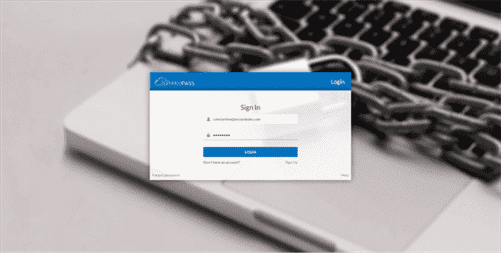Like age, family history for diabetes, hypertension, ongoing chronic medications, procedures done, children, etcetera etcetera. The EHRs developed in-line with the certifications and federal compliances are the ones connected to the central repositories. Smooth integrations across devices is also one of the primary expectations. As a result of an EHR software integration, the entire chain is augmented. The EHRs developed in accordance with these regulations are thus able to enrich the HIE with priceless data.
When these include a visit and dosage reminder, the significance is multiplied by bounds. With healthcare going online, prescriptions are the component that needs to be referred to every time one visits a doctor. A separate tab in the EHR that stores all the previous prescriptions in chronological order, or even indication-wise, if desired is a must-have feature. The idea behind the development should be to keep the formats universal. As uniform and standard the approach is, better is the acceptability and experience of the EHR deployment. This guideline is specific for developing the EHR software, to be integrated with a number of devices for data sharing and transfer.
Integration with the Labs
API integration is necessary as they help in establishing communication between the EHR and other systems. For example, RESTfulAPIs are used for developing scalable & secure EHR solutions. This functionality adds to the credibility of the entire healthcare flow and speeds up the treatment process. Also, lab operators can easily identify which tests are to be carried out and consult the practitioners directly to clarify their doubts. This boosts the efficiency as well as the accuracy of the imaging process altogether. The Global Electronic Health Records (EHR) market size is projected to reach USD 52.98 Billion by 2027, with a Compound Annual Growth Rate (CAGR) of 9.3%.

Before the advent of EHRs, storing paper records required large dedicated facilities and significant resources were spent on administrative tasks related to chart maintenance. Clinicians can prevent and treat various conditions more effectively, avoid repeating procedures unnecessarily, and prevent potentially harmful medication interactions. Binariks can assist you with any tasks from full-stack development to MVP creation or consulting. You get a partner that will stay with you during all EHR development and maintenance stages. Build EHR software using algorithms that enable manual and automated task distribution.
Software Development
This feature helps to prevent adverse drug interactions and ensures that care providers are fully informed when making medication-related decisions. All in all will help any healthcare institution grow and succeed. The average rate to develop EHR via outsourcing the task is $50/hour. And this is the lowest rate you may end up paying for the development. In the process of making a custom EHR software, the final cost will depend on the features and inclusions.
Once the EHR software has been thoroughly tested and is deemed ready for release, it is deployed to the production environment. This may involve installing the software on the client’s servers or making it available as a cloud-based service. The team may also provide training to end-users and healthcare providers to ensure that they understand how to use the software and can fully benefit from its features. Reporting is crucial in answering how to create an electronic medical record system. For healthcare practitioners, it provides a comprehensive overview of patients’ demographic data, treatments, and success rates. It offers a graphical representation of patients’ treatment progress, upcoming appointments, etc.
Cost-Reduction
Some worry that constantly updating EHR systems and migrating patient data to new systems can be counterproductive. Choosing a custom EHR software development service allows you to get exactly what you need, contributing to more effective and efficient healthcare practice. This is a handy way for patients to interact with their healthcare providers and play a more proactive role in their healthcare. They can easily access results from outpatient laboratory and radiology tests, for instance. So, it’s important to remember that the rules and regulations for EHR software development can vary by country or region.

The motive is to know whether an EHR software solves the need or not. Testing shall continue until and unless the goals of development meet with the functioning of EMR software. When the development of the EMR software ai implementation works in this manner, scalability is also easier. Once the business analysis and estimation is complete, we can start to Develop EHR. Developing a prototype first will help you understand how the software works.
Top EHR Systems of 2023: A Comparative Overview
Although, a lot of developers will know how to build such a system. Further, since it is a healthcare software, it must also be HIPAA or GDPR Compliant. And GDPR compliance is essential in the European nations for development. EHRs are used to share information between different doctors and healthcare providers like laboratories, so all information can be stored in one file. Thus, EHR can be managed by various healthcare specialists that may even work in various cities and countries.

They are usually not included in the core functionality as not every healthcare provider wants such features. The healthcare industry is strictly regulated and requires lots of documentation to prove compliance. Documents are also necessary for insurance claim processing and patient management. Thus, you must be able to generate detailed documentation and charts for each patient’s case automatically based on the data that enters the system. Functionality is another critical aspect of this “How to develop an EHR system” guide. Although custom EHR software development implies you can add whatever feature you want, some functions are essential.
Improved Patient Care
They can also improve the accuracy and completeness of medical records, reduce errors and improve patient safety, and enhance coordination and communication among healthcare providers. You have to always check the software’s validity before knowing how to create an EHR. Get several requests from your clients about custom electronic medical records costs.
- Also, consider customer reviews and case studies to gauge vendor reliability.
- Documents are also necessary for insurance claim processing and patient management.
- This way, EHR systems minimize the risk of errors that could harm patient well-being.
- This is supposed to be the landing page to register any member or patient into the system.
- Using international standards and protocols can make your system more versatile and interoperable.
- You may need to invest more to develop an EHR system according to your requirements.
- For those who complete pre-visit forms online, the system has to notify them of how long it takes to register.
With a few clicks and scrolls, one can access information boundlessly. However, those are just suggestions; if you don’t want to utilize a specific programming language or framework for whatever reason, you can always seek an alternative. Here’s a list of the most commonly used technologies in EHR development. This feature allows doctors and patients to communicate more effectively and efficiently. The text chat feature in the EHR system is a game-changer, and it can be upgraded with a photo upload capability later.
What Steps Are Involved in Creating EHR Software?
As a top-notch telemedicine app development company, we offer clients a practice-proven strategy and stress-free tech implementation. While some healthcare organizations may opt to purchase pre-existing software from third-party developers, developing your own EHR system from scratch has several advantages. Pre-built systems may only meet some of your specific requirements, making a custom-built solution potentially more cost-effective. Additionally, by developing your own EMR or EHR software, you can make changes and add new features quickly. After the software is deployed, it requires ongoing maintenance to ensure that it continues to function properly.
How Much Does Cost To Create an EHR Software?
QAs also verify software design, oversee the entire development process, and ensure compliance with industry standards. After the prototype is approved, EHR software development is handed to the developers. The development process follows a series of sprints, each delivering ready-to-use functionality.
Electronic document management
After registration, every patient is given a unique ID on the system, also known as a medical record number. Electronic medical software uses this number to track subsequent patient interactions, such as lab results, diagnoses, medications, visits, etc. We are committed to providing you with the best possible service to meet your specific needs and requirements. Please don’t hesitate to let us know when we can assist you on how to create EMR software. Creating an Electronic Health Record (EHR) system requires a comprehensive tech stack encompassing both front-end and back-end development.

